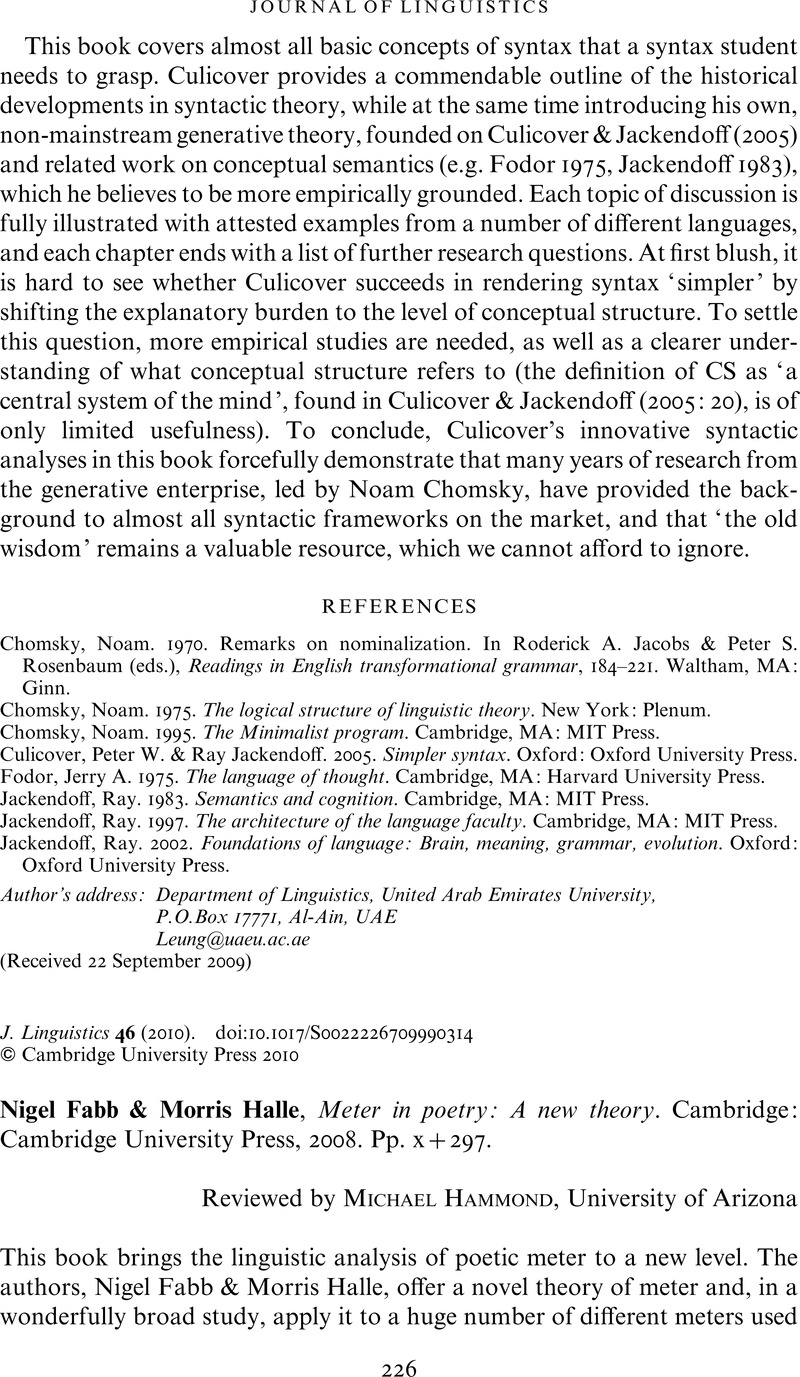No CrossRef data available.
Article contents
Nigel Fabb & Morris Halle, Meter in poetry: A new theory. Cambridge: Cambridge University Press, 2008. Pp. x+297.
Published online by Cambridge University Press: 22 January 2010
Abstract
An abstract is not available for this content so a preview has been provided. Please use the Get access link above for information on how to access this content.

- Type
- Reviews
- Information
- Copyright
- Copyright © Cambridge University Press 2010
References
REFERENCES
Chomsky, Noam & Halle, Morris. 1968. The sound pattern of English. New York: Harper & Row.Google Scholar
Golston, Chris. 1998. Constraint-based metrics. Natural Language & Linguistic Theory 16.4, 719–770.Google Scholar
Halle, Morris & Keyser, Samuel Jay. 1971. English stress: Its form, its growth, and its role in verse. New York: Harper & Row.Google Scholar
Hanson, Kristin & Kiparsky, Paul. 1997. A parametric theory of poetic meter. Language 72.2, 287–335.Google Scholar
Hayes, Bruce. 1983. A grid-based theory of English meter. Linguistic Inquiry 14.3, 357–393.Google Scholar
Liberman, Mark & Prince, Alan. 1977. On stress and linguistic rhythm. Linguistic Inquiry 8.2, 249–336.Google Scholar
McCarthy, John J. & Prince, Alan. 1993. Prosodic morphology I: Constraint interaction and satisfaction. (Rutgers Center for Cognitive Science Technical Report 3). Piscataway, NJ: Center for Cognitive Science, Rutgers University. [ROA 482]Google Scholar
Prince, Alan & Smolensky, Paul. 1993. Optimality Theory: Constraint interaction in generative grammar (Rutgers Center for Cognitive Science Technical Report 2). Piscataway, NJ: Center for Cognitive Science, Rutgers University. [ROA 537; revised version published by Blackwell, Oxford, 2004]Google Scholar




